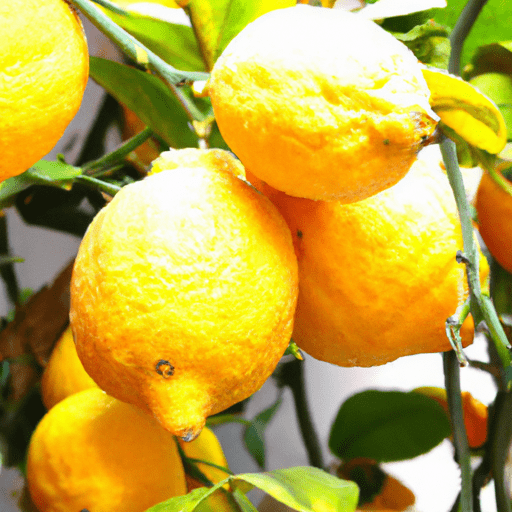Exploring the Exotic Wood Apple: A Unique Culinary Delight
If you’re someone who enjoys exploring unique and exotic ingredients, then the wood apple (Limonia acidissima) is sure to captivate your culinary curiosity. Also known as “kaitha” or “kath bel” in South Asia, this tropical fruit is not only intriguing in its appearance but also offers a multitude of flavors and health benefits. In this blog post, we will take a closer look at the wood apple, exploring its taste, common uses in cooking, nutritional value, and some interesting history and facts associated with this remarkable fruit.
Flavor Profile and Culinary Uses
The wood apple’s flavor profile is remarkably complex, boasting a blend of sweet, sour, and slightly bitter notes. When fully ripe, its flesh takes on a custard-like consistency with a rich, honey-like aroma. The taste can be described as tangy, with hints of tamarind, apricot, and chocolate, all blended into a wonderfully unique experience for your taste buds.
In South Asian cuisine, wood apples are cherished for their versatility. They are commonly used to create refreshing beverages, jams, chutneys, and even savory dishes. Wood apple juice, known as “bel sherbet,” is a popular thirst quencher during hot summers. The pulp of the fruit is often combined with jaggery, sugar, or honey to create mouthwatering desserts like wood apple mousse or ice cream. The tangy pulp is also transformed into chutneys, which pair excellently with grilled meats and flatbreads, adding a zesty kick.
Nutritional Value and Health Benefits
Beyond its delightful taste and culinary uses, the wood apple is also packed with nutritional goodness. It is an excellent source of dietary fiber, promoting a healthy digestive system. Additionally, it contains essential vitamins such as Vitamin C, Vitamin A, and Vitamin B complex, along with minerals like iron, calcium, and phosphorus.
The wood apple’s high antioxidant content makes it a powerful ally in maintaining overall well-being. Antioxidants help combat free radicals, reducing the risk of chronic diseases and supporting a strong immune system. Moreover, the fruit’s natural enzymes aid digestion and promote detoxification, making it a great addition to your diet.
Fascinating Facts and History
Aside from its culinary significance, the wood apple boasts a fascinating history. Native to the Indian subcontinent and parts of Southeast Asia, this fruit has been treasured for centuries due to its medicinal properties and cultural significance.
In Ayurvedic medicine, wood apple is highly esteemed for its ability to cool the body and balance Pitta dosha. It is often used to treat digestive ailments, respiratory issues, and to boost vitality. In some regions, the wood apple tree is considered sacred and associated with religious rituals.
Enjoy the Wood Apple Experience
If you’re fortunate enough to get your hands on this intriguing fruit, don’t miss the chance to delight your senses with its exquisite taste and versatility. From cool, refreshing beverages to delectable desserts and zesty chutneys, the wood apple’s flavor profile is a revelation worth exploring. Embrace the nutritional benefits it offers and savor the centuries-old history that accompanies this unique culinary delight.
So, be a fearless explorer in your kitchen and let the wood apple take you on an unforgettable journey of flavors and aromas. Happy cooking!
Note: The wood apple may not be readily available in all regions. If you encounter difficulty finding it, consider checking specialty grocery stores or online sources that cater to exotic or international fruits.
Wood Apple
Origin: Wood apple, also known as elephant apple or monkey fruit, is native to the Indian subcontinent and adjoining regions of Southeast Asia. It is widely cultivated in countries such as India, Sri Lanka, Bangladesh, and Thailand.
Common Uses: Wood apple is a versatile fruit used in various culinary applications. Its pulp has a tangy and fragrant taste and is commonly used in chutneys, jams, beverages, and desserts. Wood apple juice is a popular refreshing drink in many Asian countries. The hard shell of the fruit is also used to make utensils and decorative items.
Nutritional Benefits: Wood apple is rich in nutrients and offers several health benefits. It is a good source of vitamins A, C, and E, as well as minerals like calcium, phosphorus, and iron. It is also high in dietary fiber and antioxidants, which contribute to digestive health, immune support, and overall well-being. The fruit is low in calories and fat, making it suitable for weight-conscious individuals.
Unique Properties: Wood apple has certain unique properties that make it stand out. The fruit has a hard, woody exterior, which is why it is called wood apple. Inside, the fruit contains a pulpy, aromatic, and gelatinous pulp that has both sweet and sour flavors. The pulp is tannin-rich, imparting a slightly astringent taste. The fruit tends to ripen after it falls from the tree, and its aroma becomes more intense as it ripens.
Historical Significance: Wood apple has been consumed for centuries and has cultural and historical significance in many regions. In Ayurveda, the traditional Indian system of medicine, wood apple is believed to have medicinal properties and is used to treat various ailments, including digestive disorders. The tree is also considered sacred in some cultures and has references in ancient Indian texts.




Use the share button below if you liked it.
It makes me smile, when I see it.